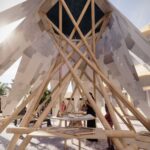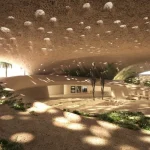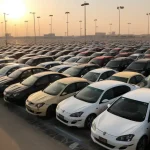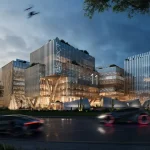Dubai buildings, UAE property, Persian Gulf real estate, Architects news, Emirate towers
Dubai Property Information : UAE Building Links
Architecture projects in United Arab Emirates: The Middle East realty designs, western Asia.
post updated 1 January 2025
Key Architectural Designs in this world-famous emirate in UAE, listed alphabetically:
++
Major Dubai Architecture Design Posts
++
Major Abu Dhabi Architecture Design Posts
+++
Major Developments in Dubai + Abu Dhabi
UAE Architecture Designs – New Property Information Links alphabetical:
Abu Dhabi Intermodal Transit Centre
Abu Dhabi Investment Council Headquarters
Barjeel Museum for Modern Arab Art in Sharjah
Habibeh Madjdabadi’s Museum for Modern Arab Art in the UAE
Dubai 2020 Expo Entry Portals in UAE
Dubai Architecture Developments
Ferrari World Abu Dhabi Building
Flamenca at The World Islands in Dubai
Grand Mosque of Gate Avenue + KSA Pavilion
Hyperloop Pods and Portals UAE
Jimmy Connors World of Tennis Abu Dhabi
Ladybird Early Learning Centre UAE
Michael Schumacher Tower Abu Dhabi
MidEastPan Design Ideas Competition
Mohammed bin Rashid Stadium Dubai
Museum of the Future in Dubai Building
New England Center for Children
Overview of Architecture in Dubai
Sheikh Zayed Bin Sultan Al Nayhan Mosque
Siemens Headquarters Masdar City
Solar Innovation Centre in UAE
Timber Pavilion Dubai Design Week 2019
Waterfront City Masterplan UAE
More UAE Building Developments + Projects online soon
UAE Property Developments
Architectural projects for this website + feedback on UAE Architecture welcome: info(at)e-architect.com
Dubai Buildings : A-F
Dubai Architecture : G-P
Dubai Building Designs : R-Z
More contemporary UAE Architectural Projects welcome
The Opus
Design: Zaha Hadid Architects
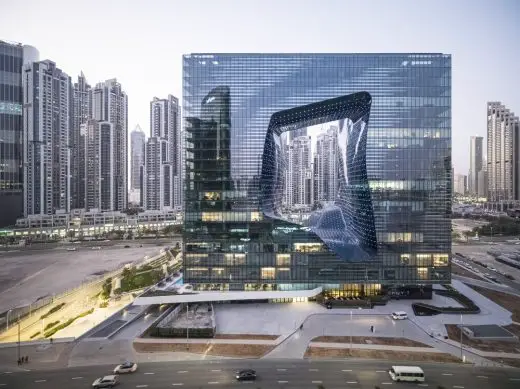
photograph : Laurian Ghinitoiu
The Opus Hotel in Dubai
Dubai
This is an emirate in the United Arab Emirates (UAE) federation. The main city of the emirate is also known by the same title. The emirate is located on the southeast coast of the Persian Gulf and is one of the seven emirates that make up the country.
It has the largest population in the UAE (around 2,106,000) and the second-largest land territory (4,114 km2) after the capital, Abu Dhabi. Abu Dhabi and Dubai are the only two emirates to have veto power over critical matters of national importance in the country’s legislature. The city is located on the emirate’s northern coastline and heads up the Dubai-Sharjah-Ajman metropolitan area.
The earliest mention of this emirate is in 1095 AD, and the earliest recorded settlement in the region dates from 1799. The emirate was formally established on June 9, 1833, by Sheikh Maktoum bin Butti Al-Maktoum.
Today, the conurbation has emerged as a cosmopolitan metropolis that has grown steadily to become a global city and a business and cultural hub of the UAE, Middle East and the Persian Gulf region. It is also a major transport hub for passengers and cargo. Although the economy was historically built on the oil industry, the emirate’s Western-style model of business drives its economy with the main revenues now coming from tourism, aviation, real estate, and financial services. The city has recently attracted world attention through many innovative large construction projects and sports events. The city has become symbolic for its skyscrapers and high-rise buildings, in particular the world’s tallest building, the Burj Khalifa.
In addition, the emirate is home to other ambitious architectural development projects including man-made islands, hotels, and some of the largest shopping malls in the Middle East region and the world. This increased attention has also highlighted labour and human rights issues concerning the city’s largely South Asian workforce. The property market experienced a major deterioration in 2008–09 following the financial crisis of 2007-08, but is making a gradual recovery with help from neighbouring emirates. The emirate needs to work hard to establish a more sustainable development given its climate and should look to good quality architects and engineers to provide a lead on green buildings.
Burj Khalifa is the most famous skyscraper in the city, in fact the most well known building in the United Arab Emirates. The tower is the tallest man-made structure in the world, at 829.8 m (2,722 ft).
Construction began on 21 September 2004, with the exterior of the structure completed on 1 October 2009. This skyscraper building officially opened on 4 January 2010, and is part of the new 2 km2 (490-acre) development called Downtown Dubai at the ‘First Interchange’ along Sheikh Zayed Road, near the main business district. The tower’s architecture and engineering were performed by Skidmore, Owings and Merrill (also known as SOM) of Chicago, USA, with Adrian Smith as chief architect, and Bill Baker as chief structural engineer. The primary contractor was Samsung C&T of South Korea.
The Burj Khalifa building was designed to be the centerpiece of a large-scale, mixed-use development that would include 30,000 homes, nine hotels, 3 hectares (7.4 acres) of parkland, at least 19 residential towers, a mall, and the 12-hectare (30-acre) man-made Burj Khalifa Lake.
The decision to build the Burj Khalifa tower is reportedly based on the UAE government’s decision to diversify from an oil based economy to one that is service and tourism based. This will allow the country to establish a more balanced and long-term prosperity, based on a more diverse economic foundation.
The emirate has a rich collection of buildings and structures of various architectural styles. Many modern interpretations of Islamic architecture can be found here, due to a boom in construction and architectural innovation in the Arab World in general, and in this city in particular, supported not only by top Arab or international architectural and engineering design firms such as Al Hashemi and Aedas, but also by top firms of New York and Chicago. As a result of this boom, modern Islamic – and world – architecture has literally been taken to new levels in skyscraper building design and technology. The city now boasts more completed or topped-out skyscrapers higher than 2/3 km, 1/3 km, or 1/4 km than any other city in the world.
In November 2011, four cities had their bids for Expo 2020 already lodged, with the emirate making a last-minute entry. The delegation from the Bureau International des Expositions, which visited the city in February 2013 to examine the Emirate’s readiness for the largest exposition, was impressed by the infrastructure and the level of national support. In May 2013 the Expo 2020 Master Plan was revealed. The city then won the right to host Expo 2020 in November 2013. The event will bring huge economic benefits by generating activities worth billions of dirhams and may create over 270,000 jobs. The main site will be a 438-hectare area (1,083 acres), part of the new Dubai Trade Centre Jebel Ali urban development, located midway between the two emirates.
The city has a hot desert climate. Summers are extremely hot, windy, and humid, with an average high around 41 °C (106 °F) and overnight lows around 30 °C (86 °F) in the hottest month, August. Most days are sunny throughout the year. Winters are warm with an average high of 24 °C (75 °F) and overnight lows of 14 °C (57 °F) in January, the coldest month.
Source: in part from wikipedia
Kraz Restaurant, Sharjah
Architects: H2R Design

image courtesy of architects office
Kraz Restaurant in Sharjah
UAE Building News – excerpts:
May 26, 2016
School Building in The Sustainable City
Design: CEBRA, architects
The school is planned to be built inside the first residential community of its kind in the emirate, and the project aims at rethinking teaching and learning environments in a sustainable way. The architects office is based in Denmark.
March 29, 2016
The Address skyscraper building
Design: Atkins, architects
A fire has broken out in a tower block in the city of Ajman in the United Arab Emirates. Previously we posted news of the fire engulfing The Address Hotel, close to the world’s tallest skyscraper, the Burj Khalifa.
March 22, 2016
Benetton Concept Shop in the Middle East
Design: Matteo Cainer Architects Ltd
The project is a chance to create an intense and relevant design in the Middle East while linking and incorporating the world of fashion and Architecture. The architectural practice is based in Europe.
March 20, 2016
2020 Expo Pavilions
Design: Foster + Partners, BIG and Grimshaw Architects
Buildings / photos for the UAE Property + Architectural Development Middle East page welcome
Website: Dubai in UAE


